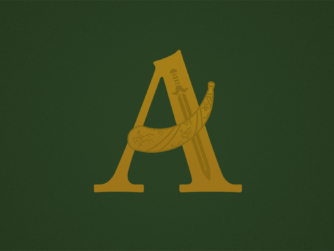The Council of Elrond draws to a close, and options are finally debated about what to do with the One Ring. But the easy way is obviously the wrong way, the hard way seems impossible; and frankly, you know the committee is running out of ideas when “give the doomsday weapon to the guy in the yellow boots who sings all the time” is a proposal under serious consideration. But in Tolkien’s world, small hands often move the wheels of the world… and fortunately, there are a lot of small hands going up around the table.
For Shawn’s Prancing Pony Pondering from 2017 on “Inspiration”, click here: https://theprancingponypodcast.com/2017/02/05/inspiration/
Recommended Reading:
Tolkien, J. R. R. The Fellowship of the Ring: Being the First Part of The Lord of the Rings (Mariner Books, paperback) pp. 258-264, “The Council of Elrond”
Tolkien, J. R. R. (Christopher Tolkien, ed.) The Silmarillion (Mariner Books, paperback)
Carpenter, Humphrey, ed. The Letters of J.R.R. Tolkien (Mariner Books, paperback)
Shippey, Tom. J.R.R. Tolkien: Author of the Century (Mariner Books, paperback)



Regarding “ever has treason been our greatest foe” being a broken reference, I only partially agree.
If we’re only talking about Sauron and the third age it could be a broken reference but I feel Gandalf is referring to Sauron *and* Morgoth.
Perhaps Gandalf wasn’t in Middle Earth during the Elder Days but he definitely is aware of what transpired.
And the first age is full of treason: Maeglin betraying Gondolin, the Easterlings betraying Maedhros at the Nirnaeth Arnoediad, etc.
That said I’m sure there is treason in the second and third ages we don’t know about which makes Gandalf’s statement a partial broken reference, but not completely broken.
Treason was very much a factor in the First Age wars, but the reason I don’t think Gandalf is talking about Sauron and Morgoth is because he’s talking about “the long wars with the Dark Tower”. The Dark Tower can only mean Barad-dûr (Angband was an underground fortress, not a tower) and by association means Sauron. It wasn’t built until the Second Age.
We’ve gotten enough feedback on this question that I think we’ll be revisiting it in an upcoming episode. 🙂
Almost 2 years later, I just happened upon a line that definitely aligns with Gandalf’s statement”In all the long wars with the Dark Tower treason has ever been our greatest foe”!!!
Besides the recently-discovered treachery of Saruman, a much older example is proven in the chapter “The Tower of Cirith Ungol.”
The famous quote that the Tower of Cirith Ungol was “built not to keep enemies out of Mordor, but to keep them in”…
After the War of the Last Alliance, the Tower was built on the eastern end of what was then called Cirith Dúath as an eastern outpost of Ithilien to keep the enemies inside Mordor.
But note this quote from the same paragraph:
“But as with Narchost and Carchost, the Towers of the Teeth, so here too the vigilance had failed, and treachery had yielded up the Tower to the Lord of the Ringwraiths”
So! Narchost, Carchost, Minas Ithil, & the Tower at eastern Cirith Dúath were all lost to treason!
A great find! Thank you, Chad.
When you read discussed the bit where Elrond says he has known few hobbits, it made me think of the part in the Hobbit when Gandalf re-introduces himself to Bilbo, who responds with; “Dear me! Not the Gandalf who was responsible for so many quiet lads and lasses going off into the Blue for mad adventures? Anything from climbing trees to visiting elves—or sailing in ships, sailing to other shores!”
Could it be possible that Gandalf has brought a few of his hobbit friends to visit Rivendell?
This was an interesting thought that occured to me during this episode, and I would love to hear your thoughts on this.
I was thinking this very idea, too. Might be some fun fan fiction awaiting us….
That very well could be! We never get the tales of those “quiet lads and lasses”, but we do know deep down that Bilbo wasn’t the first…
There was Hildifons Took, born SR 1244, who “went off on a journey and never returned”. And Isengar Took (1262-1360), said to have ‘gone to sea’ in his youth.
Both in Appendix C